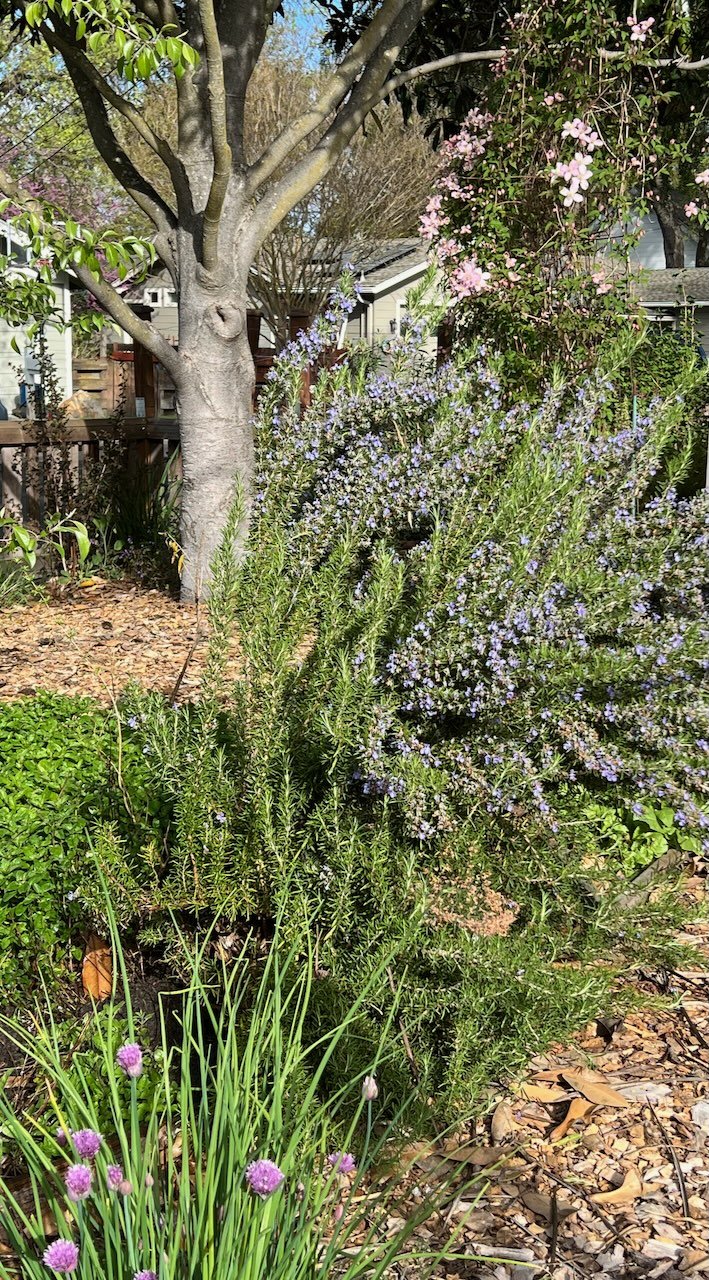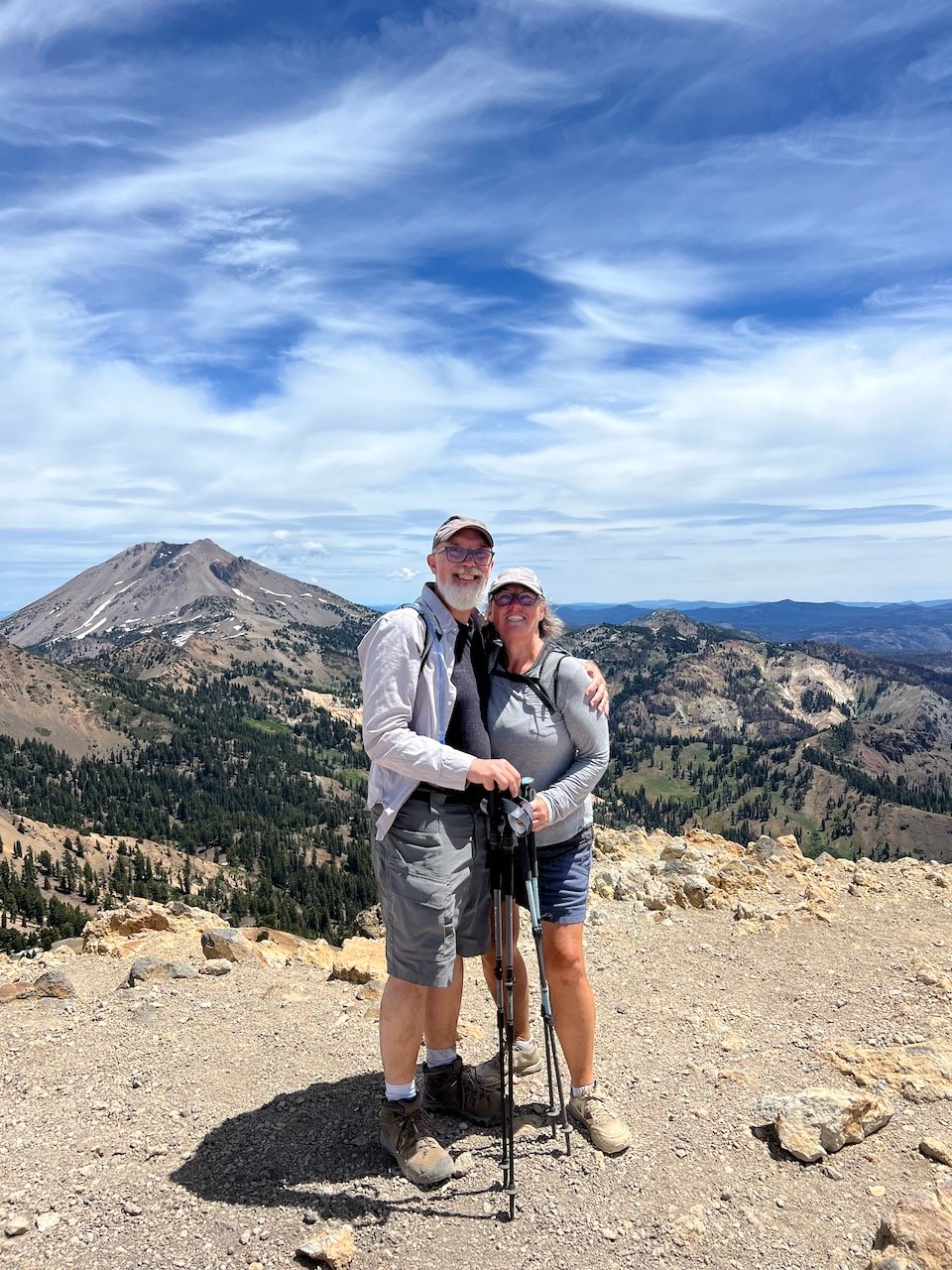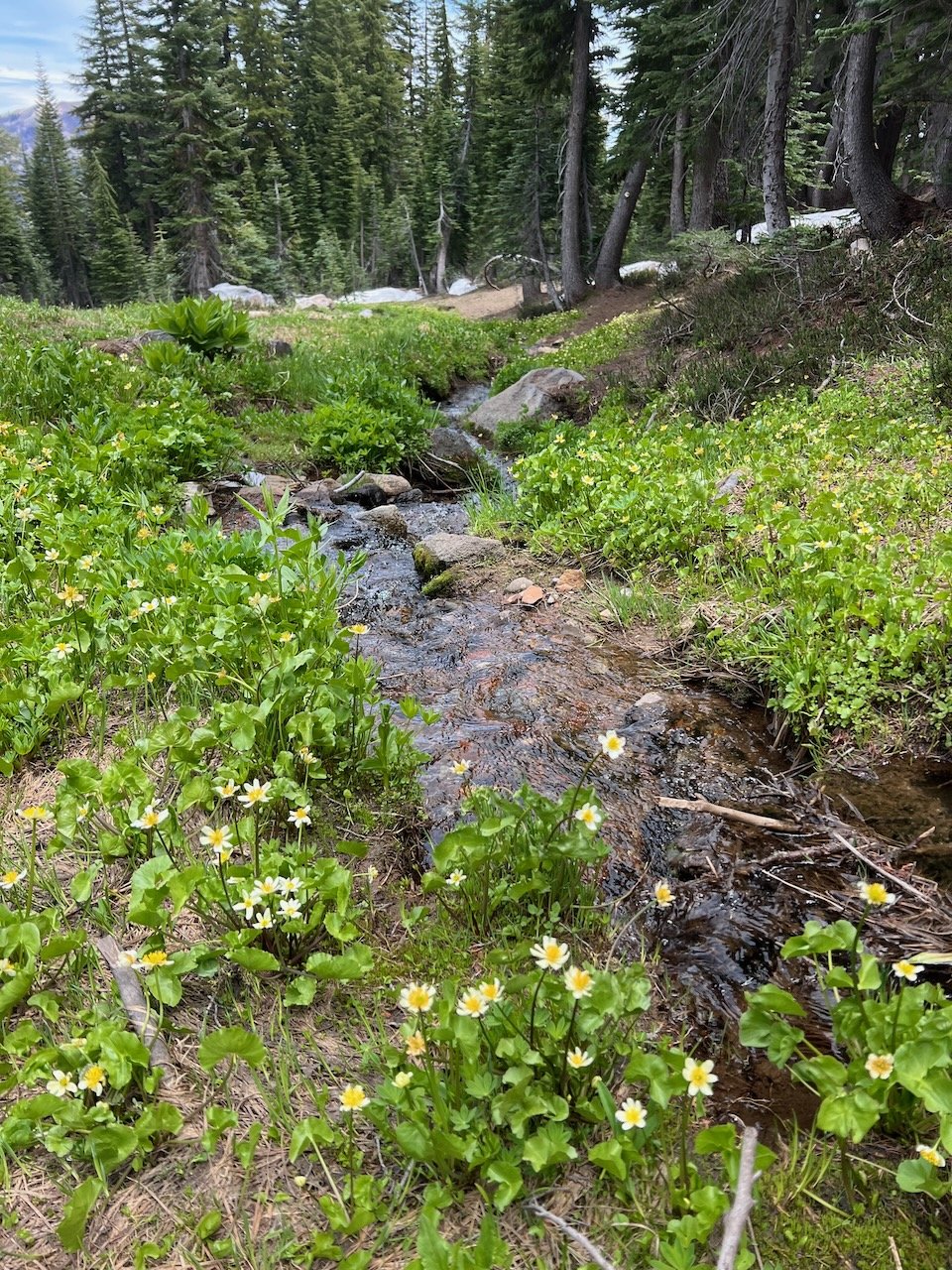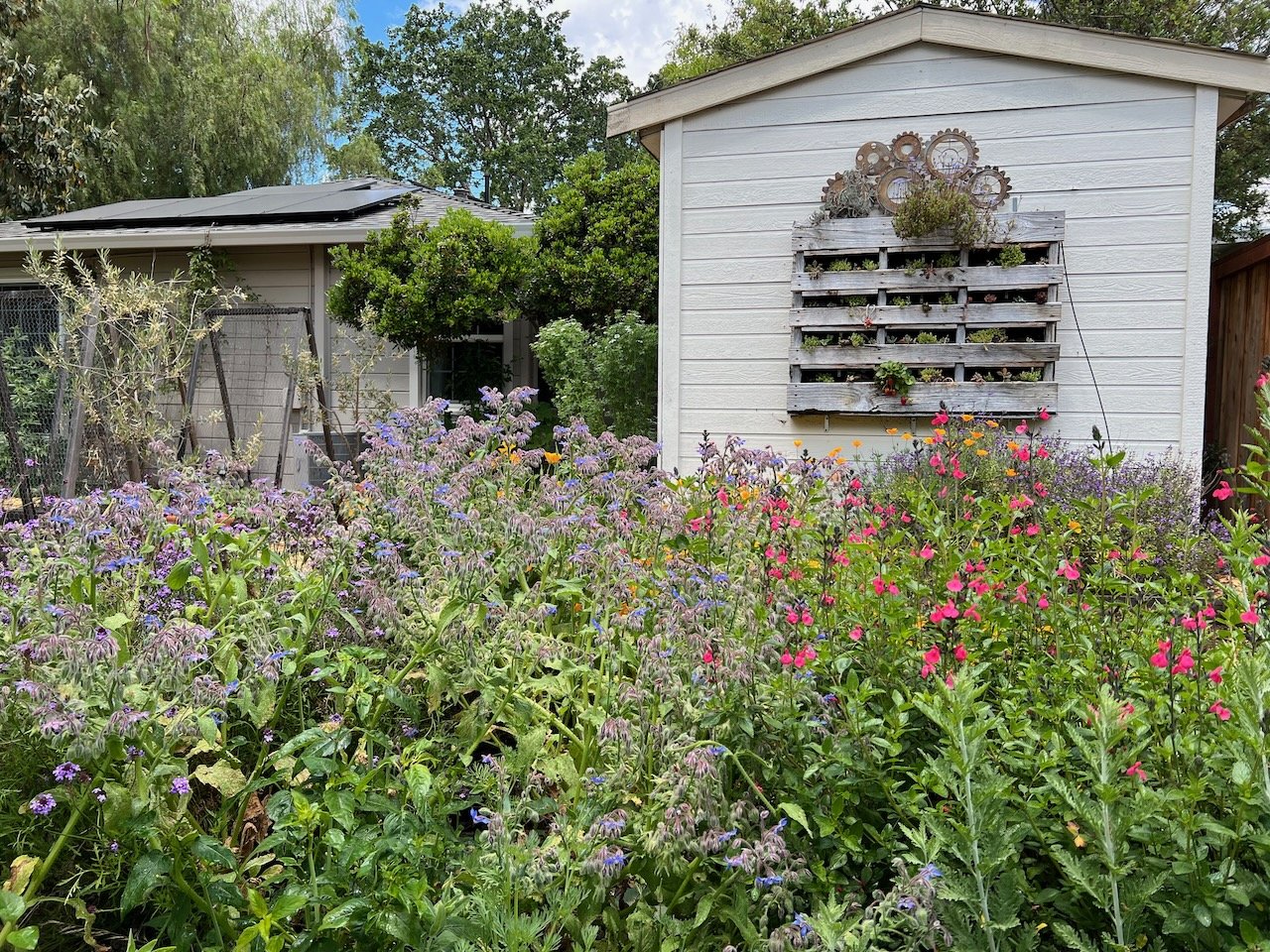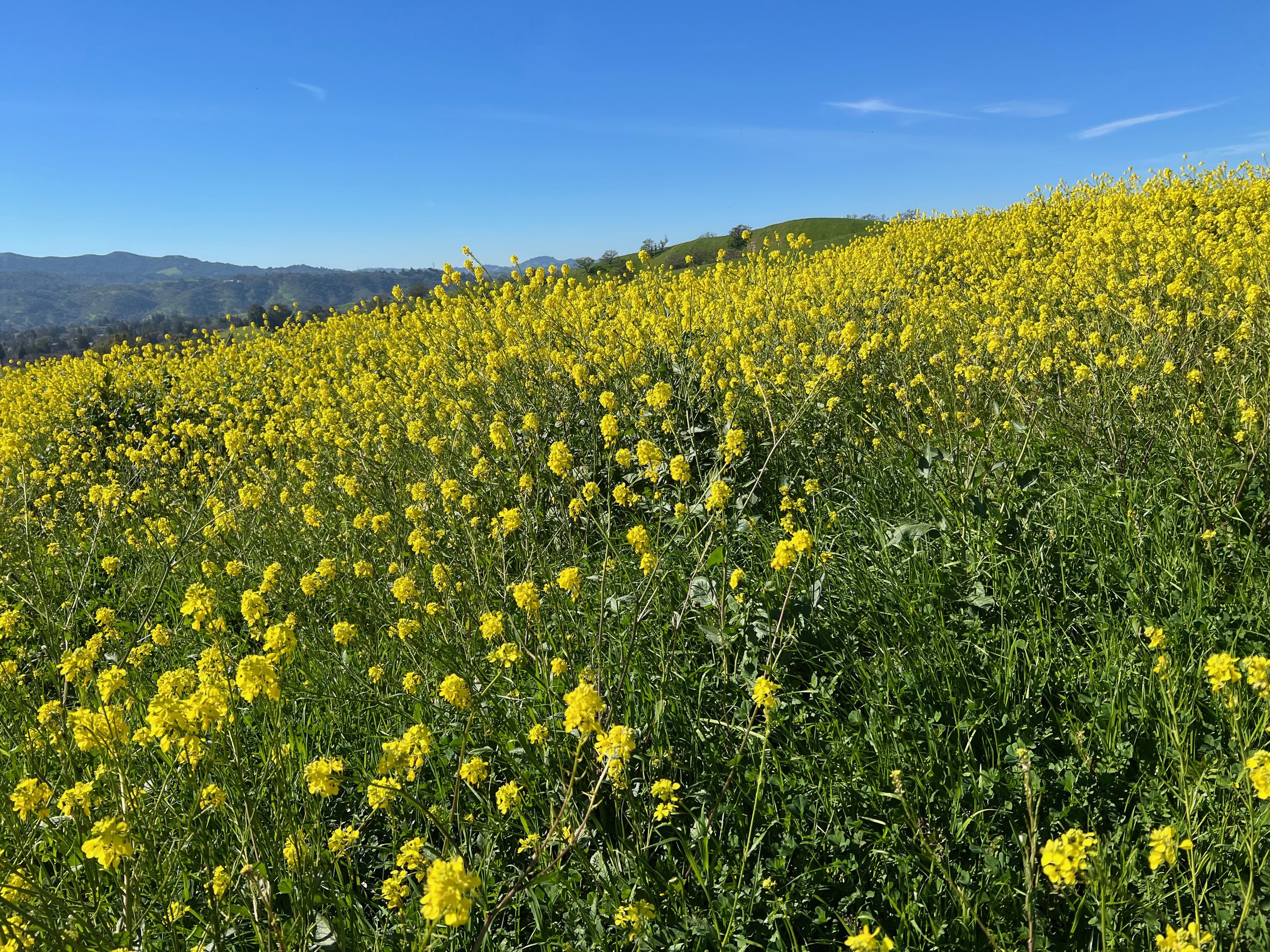I don’t know about you, but one of the things that is making me so happy right now is walking out into the garden and watching everything waking up. The fresh new green leaves, the various flowers, the birds mating and building nests, the bumblebee queens making their first foraging flights - it’s all very exciting, and it’s changing every day.
And as I’ve been observing, I’ve also noticed specific groupings of plants that are particularly pleasing. None of these was created on purpose; it’s either happened completely by accident or because the plants have migrated or seeded themselves into this position.
For instance, take the group at the top of this page. It’s mostly native plants. In the center on the wooden tripod, there’s Garrya elliptica ‘James Roof;’ behind that on both sides is a Ribes sanguenium which is quite happy and growing larger every year; in the back on a green trellis is Pacific Ninebark (Physocarpus capitatus) which will get big as the season goes on; and on the other side is a towering white ceanothus. In the front on one side you see the feathery leaves of Artemisia palmieri (San Diego mugwort) and on the other side are narcissus leaves, with columbine starting to reach up behind. It’s such a pleasing grouping, and all these plants are thriving in this shady, protected spot by Adam’s train shed.
Near the driveway gate, a white ceanothus is positively groaning with blossom; the light purple spikes of black sage (Salvia mellifera) are poking up through it while the chubby cones of Pride of Madiera (Echium candicans) are just starting to bloom. You can see the leafy branches of Caryopteris clandonensis ‘Dark Knight’ jutting up - these will eventually be covered with purple inflorescences that the bees adore. To the left are some gladiolas that a friend gave to me years ago, which bloom spectacularly pink every summer. Since this is at the top of our driveway, every time I pull the car in, it feels like the plants are welcoming me home.
Just inside the driveway gate, there’s this little grouping behind some hurdles Dad made for me out of invasive French broom: Self-seeded Nigella damascena (Love-in-a-Mist) in the foreground, then a striking plant with white blooms that I was given at school and never recorded the name of (don’t do this!), a Japanese maple with dark red foliage in the middle (Acer palmatum ‘Crimson Queen’), and a sweet autumn clematis (Clematis paniculata) growing up the fence and on the trellis over the gate (which blooms an abundant and dramatic white every fall). Ajuga repens ‘Burgandy Glow’ (carpet bugle) runs under everything and common plantain is scattered throughout. In May, Geum chiloense ‘Sunrise’ bursts out and adds an orange glow, along with some purple-blue true geraniums and some native white yarrow.
Here, I particularly like the view of the pinky purple chive blossoms against the purple blue rosemary flowers, which then leads your eye to the pink Montana clematis growing up the side of the house. (A pair of house finches have decided to make their nest behind the clematis this year, which delights us.) Delicious, fragrant oregano carpets the ground to the left of the rosemary. The handsome form and the smooth gray-white bark of a southern magnolia tree completes the picture.
Under that same magnolia, self-seeded Stachys bullata (CA hedge nettle) is taking over, and will soon have tall purple blossoms, which mirror the purple-blue of the Geranium pyrenaicum ‘Bill Wallace’ just behind. And behind that, you can see the new dark leaves of Psycocarpus opulifolius ‘Monlo’ (a variety of Pacific Ninebark) starting to emerge. This ninebark gets tall and the dark leaves get very large, and that foliage is very striking against the green and purple below.
In the South Garden near the gate, I like the garish combination of the magenta California redbud (Cercis occidentalis) against the bright orange California poppies, and the deeper oranges and reds of the Sparaxis ‘tricolor’ (Harlequin flower). You can also see this year’s crop of garlic, looking wonderful. That will be ready to harvest at the end of May!
Finally, near the front porch there is a spectacularly green Acer palmatum ‘Lemon Lime Lace’ which arches over the delicate blue of self-seeded Chinese forget-me-nots and some freesia that perfumes the air every spring. The silvery-grey foliage on the right is a butterfly bush, and the spiky bulb beneath that is our California Douglas iris, which will bloom a little later in the season.
I wanted to share these groupings with you because it just proves that you don’t have to know what you are doing, or make big and complicated plans, to make an interesting-looking garden. Just pick some flowers that you like and give them a try! The results will likely surprise and delight you.
I’d love to know what’s happening in your garden this spring!



